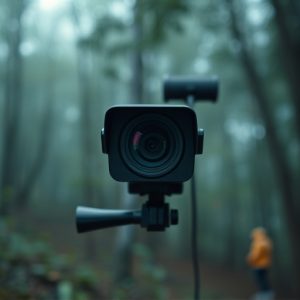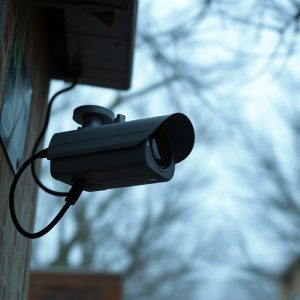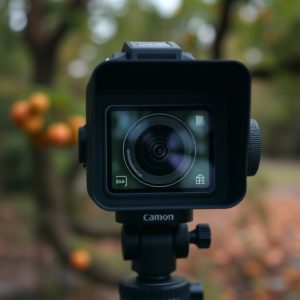Unveiling Safe Rentals: Spotting & Preventing Indoor Spy Cameras with Night Vision
Installing indoor spy cameras with night vision in rental properties raises legal issues, requiring…….
Installing indoor spy cameras with night vision in rental properties raises legal issues, requiring landlords to balance security concerns with tenants' privacy rights while adhering to local and federal laws. These cameras, often placed discreetly in out-of-sight areas like behind picture frames or light fixtures, offer 24/7 surveillance but must be installed strategically and with explicit tenant consent. Detecting hidden cameras requires thorough inspections, technology use, and regular router security updates. Prioritizing open communication fosters a harmonious rental environment; alternative measures like CCTV in common areas can maintain security without infringing on tenants' privacy. Tenants should conduct inspections, use security measures, and update systems to protect against clandestine surveillance.
In today’s digital age, understanding the legal implications of hidden surveillance is crucial for both landlords and tenants. While indoor spy cameras with night vision can offer security benefits, they raise significant privacy concerns. This article explores the ethical maze surrounding these devices in rental properties. We’ll guide you through common discreet placement spots, teach you how to detect hidden cameras, and highlight measures to protect yourself from unwanted monitoring. Stay informed about your rights and stay safe from secret surveillance.
- Understanding Legal Implications of Spy Cameras in Rentals
- Common Discreet Placement Spots for Indoor Spy Cameras with Night Vision
- How to Detect Hidden Cameras in Your Rental Property
- Ethical Considerations and Tenant Privacy Rights
- Protecting Yourself: Measures to Avoid Being Monitored in Your Rental Home
Understanding Legal Implications of Spy Cameras in Rentals
The installation of spy cameras, especially indoor spy cameras with night vision, in rental properties is a complex issue that requires careful consideration of legal boundaries. While landlords may have legitimate concerns about property security and tenant behavior monitoring, it’s crucial to understand the rights of both parties. Tenants have privacy rights, and any form of surveillance must adhere to local and federal laws. Unlawful installation or use of spy cameras can lead to serious legal consequences for landlords, including potential fines and civil lawsuits.
In many jurisdictions, tenants are protected from unreasonable search and surveillance. Landlords must obtain explicit consent before placing cameras in rented spaces, especially in areas considered private, such as bedrooms or bathrooms. Moreover, proper disclosure and transparency about the camera’s presence are essential to ensuring tenant comfort and trust. Awareness of legal implications can help landlords maintain a safe environment while respecting tenants’ privacy.
Common Discreet Placement Spots for Indoor Spy Cameras with Night Vision
Common Discreet Placement Spots for Indoor Spy Cameras With Night Vision include areas that offer optimal coverage and are out of sight. These might be behind or inside common household items such as picture frames, clock radios, or even light fixtures. Ceilings and corners also provide excellent viewing angles without being easily noticeable. For added security, these cameras often come with night vision capabilities, allowing them to capture clear footage in low-light conditions.
Strategic placement near doors and windows can offer a comprehensive view of entry points, while also monitoring activity within the home. Kitchens and bathrooms are other popular spots due to their high potential for security breaches or privacy concerns. With the right setup, an Indoor Spy Camera With Night Vision can provide peace of mind by ensuring your rental property is secure around the clock.
How to Detect Hidden Cameras in Your Rental Property
Detecting hidden cameras, like an Indoor Spy Camera With Night Vision, in your rental property requires a meticulous eye and some know-how. Start by inspecting common locations where cameras might be concealed—behind pictures, mirrors, or clock radios. Check for any unusual wiring or small holes that could indicate the presence of a hidden device. Use a flashlight to peer into tight spaces and consider purchasing a camera detector or infared thermal imager, which can help identify heat signatures left by active devices.
Don’t underestimate the power of technology; download apps designed to detect Wi-Fi signals, as many spy cameras connect to your property’s network. Additionally, look for signs of tampering with your internet router or data usage spikes that could suggest unauthorized activity. Regularly changing your wireless network password and keeping firmware up-to-date are essential preventive measures against covert surveillance.
Ethical Considerations and Tenant Privacy Rights
In the realm of rental properties, installing devices like an indoor spy camera with night vision raises significant ethical considerations and tenant privacy rights concerns. Landlords must tread carefully to avoid infringing on their tenants’ right to privacy, which is a fundamental human right. While it’s understandable that landlords seek to ensure property security and maintain order, they must prioritize open communication and transparency over covert surveillance.
Tenants have the right to expect that their private spaces are just that—private. Secretly installing indoor spy cameras with night vision can create an atmosphere of distrust and unease. It is crucial for landlords to explore alternative security measures, such as traditional CCTV systems in common areas or implementing robust keycard access controls, which strike a balance between property security and tenant privacy. In today’s digital era, it’s essential to navigate this delicate equilibrium to foster a harmonious rental environment.
Protecting Yourself: Measures to Avoid Being Monitored in Your Rental Home
If you’re renting a home, it’s essential to be aware that secret surveillance spots could exist. While landlords have the right to monitor common areas and ensure property safety, installing hidden cameras in rental units is illegal in many jurisdictions. One device often associated with clandestine surveillance is an indoor spy camera with night vision. To protect yourself, start by conducting a thorough inspection of your rental property, looking for any signs of hidden cameras or other monitoring equipment. Pay close attention to common spots like ceiling corners, door frames, and wall junctions where such devices might be concealed.
Additionally, consider implementing security measures that make it more difficult for someone to secretly monitor your space. This could include securing all doors and windows with robust locks, using privacy curtains or blinds, and avoiding leaving personal items unattended in areas visible through windows. Regularly updating your security system and being vigilant about any unusual activity around your rental property can also help deter potential intruders from setting up illegal surveillance equipment.
While indoor spy cameras with night vision can raise privacy concerns, understanding their legal placement and ethical implications is key for both landlords and tenants. Awareness of common discreet spots and detection methods empowers individuals to protect their privacy rights. By taking preventive measures, tenants can ensure their rental property remains a safe and secure space free from surveillance without consent. Landlords, too, must balance security needs with the respect for tenant privacy, fostering an ethical environment in their properties.


